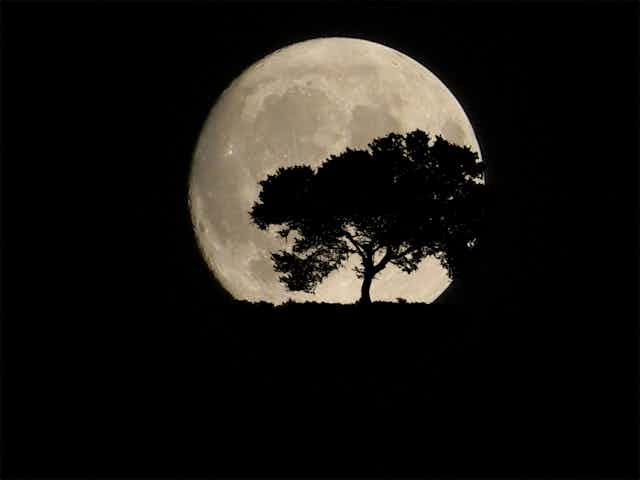The year’s biggest “supermoon” will rise on August 10. Like last time, there will be many pictures trying to showoff the “over-sized” moon. But I don’t think it deserves so much attention.
At 7.09pm BST that evening, the moon will be at its closest point to the Earth. This is because of its slightly eccentric orbit.
The distance between the moon’s centre and the Earth’s centre will be 356,896 km, as opposed to an average distance of 384,400 km. The moon will be full all night – that is, fully illuminated by the sun – so you won’t need to look at a precise time to “experience” the phenomenon.
As it happens, the moon is at its closest once every month, but it is only when the closest approach coincides with the full moon that people make a fuss. Supermoon is a term coined by an astrologer about 30 years ago, and it has caught the popular imagination more recently.
It is a neat term – like supervolcano. A supervolcanic eruption somewhere in the world happens on average only every 50,000 years or so, produces at least ten times more ash than any volcano in the past millennium, and could blot out so much sunlight that plants would cease to grow for months on end. A supermoon is defined as a full moon occurring during the tenth of its orbit that is closest to the Earth. On average this happens at least once a year – there are three in a row in 2014 – and scarcely looks special at all.
I am in favour of people being encouraged to go out and look at the moon, but not of urging them to do so under false pretences. A supermoon is a curiosity, and has no measured correlation with natural disasters such as storms and earthquakes. If you take a long-term average, ocean tides on the coast will be fractionally larger when there is a supermoon. But other effects that can increase or depress tidal range, such as wind speed and direction, or changes in atmospheric pressure, are more than enough to swamp the tiny difference between normal tide and supermoon tide on any day.

If you were to measure the moon’s apparent diameter on the night of a supermoon, it would be less than a tenth more than the average. You aren’t going to notice this just by looking.
Other effects, such as the well-known “moon illusion”, which makes the moon look larger when it is near the horizon, will dominate. Its size in the sky is not really any bigger, it just looks bigger because you subconsciously compare it with other distant objects. When the moon is high in the sky there’s nothing to compare it with, so it seems smaller – adrift in a sea of black.
You won’t notice brighter moonlight either, unless you go out expecting to be dazzled and allow yourself to be fooled by the hype.
So if you happen to see the supermoon, it will seem large because it will be right on the horizon. Because of the time of year it will stay fairly low all night. By all means go out and enjoy it – but please don’t kid yourself that it is anything out of the ordinary.
Next, read this: Moon’s gravity alone cannot create the world’s largest tides

